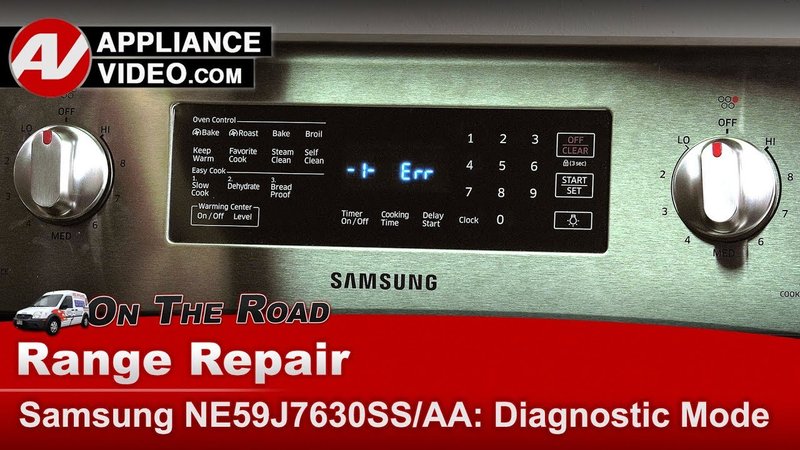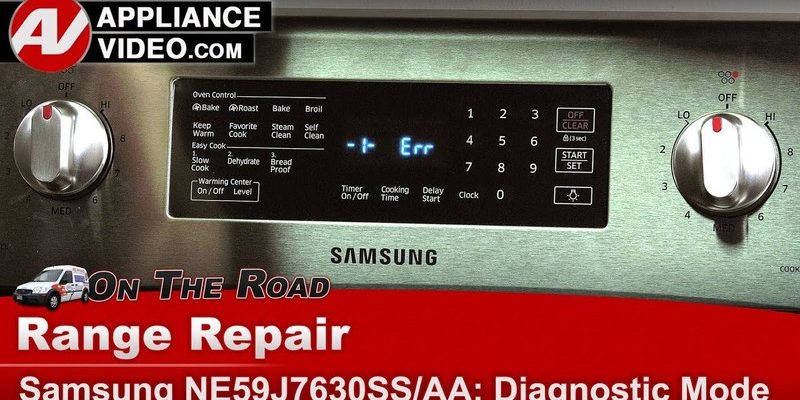
The good news is that understanding these error codes doesn’t require an engineering degree. It’s more like learning a new recipe. By the end of this article, you’ll have a clearer picture of what might be causing the error and some straightforward steps you can take to resolve it. Let’s dive into the nitty-gritty of what causes this pesky error code and how you can address it.
Understanding the Samsung Oven’s Temperature Sensor
To get to the root of the F1 error, we first need to understand the role of the temperature sensor in your Samsung oven or range. Think of the sensor as the thermostat in your car that tells you the engine temperature. In ovens, this sensor ensures that your meals bake at the right temperature, not too hot or too cold. It’s a critical component that keeps your culinary efforts on track.
When the temperature sensor malfunctions, it can send incorrect signals to the oven’s control board, triggering the F1 error code. Much like when your car’s thermostat fails and triggers the check engine light, the oven’s error code is its way of saying, “Something needs attention here!” If the sensor detects a temperature outside the expected range, even if momentarily, it can cause the F1 code to pop up, disrupting your cooking plans.
Next steps? It’s a good idea to check if the sensor is the culprit. You can locate it in most models at the back wall inside the oven. If you’re unsure, consulting your user manual or Samsung’s official website could provide guidance on where it’s situated. If you feel comfortable doing so, you can use a multimeter to check the resistance of the sensor. If the readings aren’t within the specified range, replacing the sensor might resolve the issue.
The Control Board: The Brain of Your Oven
Now, let’s talk about the control board, which is essentially the brain of your Samsung oven. It coordinates all the commands, ensuring each component functions harmoniously. Picture it as the conductor of an orchestra, guiding every instrument to create a symphony. But what happens when the conductor has an off day? That’s right — chaos ensues!
If the F1 error is not related to the sensor, it might be a control board issue. Over time, electrical components can fail, much like a light bulb burning out. This can happen due to power surges or simply wear and tear from regular use. The control board can sometimes receive incorrect signals, leading to a false error code. It’s a bit like receiving a faulty telegraph message; the error code might appear without any actual fault.
If you suspect the control board, one potential step is resetting the oven by unplugging it for a few minutes before plugging it back in. This action can sometimes clear temporary glitches. However, if the problem persists, consulting a professional for a control board replacement might be necessary. It’s crucial to address this promptly to avoid further complications with your oven.
Troubleshooting and Preventative Measures
Here’s the deal: While encountering an error code can be frustrating, there are some straightforward steps you can take to troubleshoot and prevent future occurrences. Regular maintenance is like taking care of your garden; with a little effort, you can enjoy a blooming space without weeds.
Firstly, ensure your oven is always clean and free of debris. Spills can sometimes cause components to malfunction. Regularly checking and cleaning the sensor and ensuring wires are intact can prevent unexpected errors. Additionally, avoiding extreme temperature settings can prolong your oven’s lifespan, just like driving smoothly extends a car’s life.
Should you continue facing issues despite taking these steps, it might be time to call in a professional. They can perform a detailed diagnosis and provide a more permanent solution. Remember, while it’s tempting to try and handle things yourself, some repairs require expert hands to avoid any safety hazards.
Wrapping It Up: Cooking with Confidence
Understanding your Samsung oven’s F1 error code is like mastering a challenging recipe. With the right ingredients and steps, you can overcome it with ease. Identifying whether the issue lies with the temperature sensor or the control board is the first step toward resolution. Armed with this knowledge, you can cook with confidence, knowing errors won’t stop you from enjoying your favorite meals.
Finally, as a preventive measure, consider scheduling regular maintenance checks for your appliances. It’s a bit like visiting the dentist; regular check-ups can prevent bigger problems down the line. Happy cooking! If you ever encounter the F1 error again, you’ll know just what to do.
